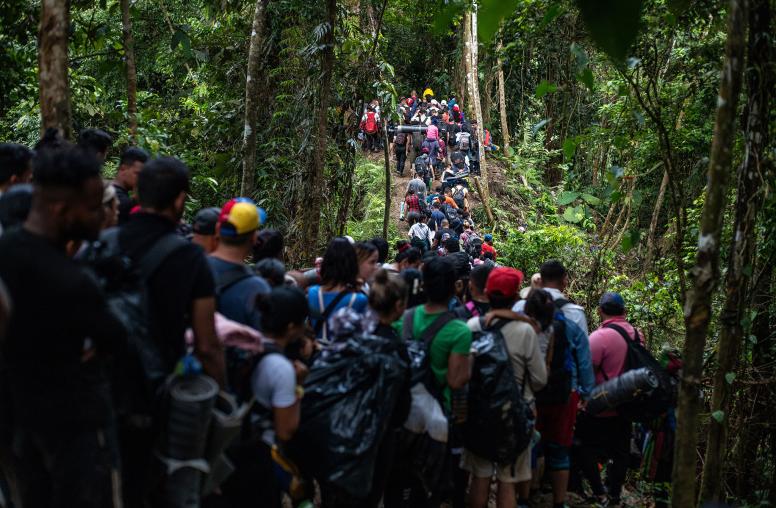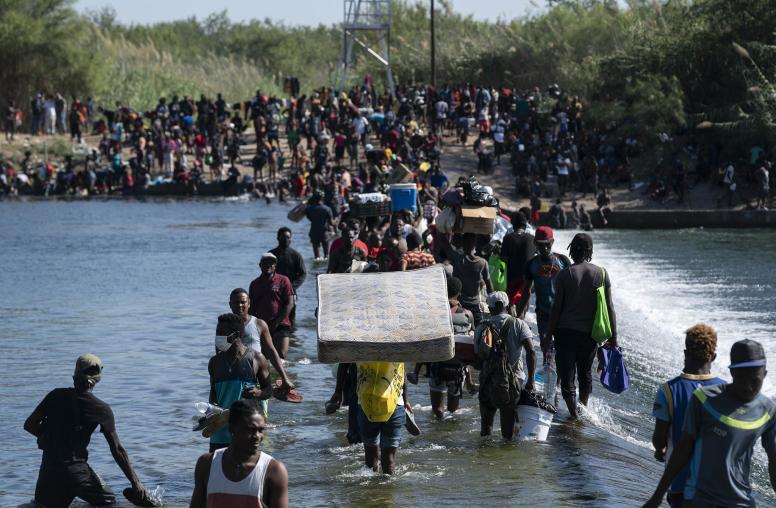Under congressional mandate, USIP has convened the bipartisan Task Force for Extremism in Fragile States to design a comprehensive new strategy for addressing the underlying causes of violent extremism in fragile states. In this excerpt from the Task Force's forthcoming report, we explore how extremism has evolved over the last 17 years and presented a new threat to U.S. security.
Read more on how fragile states fail their citizens and threaten global security.

Extremists have attempted to achieve their ideological objectives in different ways. Islamist militants in Algeria and Egypt waged bloody but unsuccessful insurgencies during the 1990s to overthrow those countries' regimes. Osama bin Laden blamed their failure on Western support for secular Middle Eastern states. He created al-Qaida to attack the United States and force it to withdraw from the region.
After al-Qaida was driven out of Afghanistan in 2001, a new strategic vision emerged. An influential 2004 strategic treatise, The Management of Savagery, called on al-Qaida to exploit "the weakness of the ruling regime" rather than try to overthrow entire states or attack the West. The treatise argued that extremists should concentrate on providing "food and medical treatment" in the areas they control, while preserving "security and justice, securing the borders," and "setting up defensive fortifications."
Fragile states, extremists realized, afforded a conducive environment for establishing experiments in governance and thereby demonstrating the validity of the extremist ideological agenda.
During the following decade, extremists began to execute this strategy. Al-Qaida imposed harsh versions of Islamic law in Fallujah in 2004. Extremists in Somalia, Yemen, Libya, and Mali captured towns, established rudimentary governance structures, provided social services, and established makeshift Islamic courts, curtailing freedoms and imposing strict punishments.
The most dramatic project of extremist state building was the self-proclaimed Islamic State of Iraq and Syria (ISIS). The ISIS caliphate provided courts, religious schools, and social welfare services; maintained public order; and even collected hundreds of millions of dollars in taxes.
Although the United States and its partners have crushed ISIS's proto-state, a declaration of victory is premature. Rather than accept defeat, ISIS extremists have warned that they are still in the fight. Indeed, extremism is more widespread today than at any time before.
Extremist Attacks and Governance in the Middle East, the Horn of Africa and the Sahel, 1996 - 2001

Extremist Attacks and Governance in the Middle East, the Horn of Africa and the Sahel, 2013-2018

ISIS is still present in Iraq and Syria and has established affiliates in 12 countries. And al-Qaida has grown in strength in recent years, with a presence in Syria, Yemen, and now the Sahel.
Moreover, the extremist focus on winning territory and establishing governance has blurred the line between terrorism, insurgency, civil war, and international conflict. Today, 77 percent of conflicts in the Middle East, the Horn of Africa, and the Sahel have a violent extremist element, compared with 22 percent in 2001. Extremists instigated violent insurgencies in the Sinai and Nigeria. In countries with a preexisting conflict—in Iraq, Libya, Somalia, Syria, and Yemen—violent extremist groups have exerted significant influence and sometimes gained territorial control.
Extremists are primed to attempt governing again. They only need another political crisis, breakdown of social order, or nascent civil conflict to make their comeback. Due to the persistence of state fragility across the Middle East, the Horn of Africa, and the Sahel, the risk of another extremist attempt to seize and govern territory remains high.

